As your wedding comes closer, more and more things need to be handled. For instance, you need to hire vendors, send invitations, and more. A small yet important decision any couple needs to make is how to number tables at their wedding.
There are many ways you can number tables at your wedding. The most common way to do so is using numerals — tables 1, 2, 3, and so on. However, you can also use letters, words, and themes to differentiate tables.
Written below is a step-by-step guide for how to number tables at weddings, including tips for creating the seating plan. Some examples of table arrangements are also provided. Lastly, some tips for numbering and arranging tables are enumerated.
How to Number Tables at Wedding: Steps to Follow
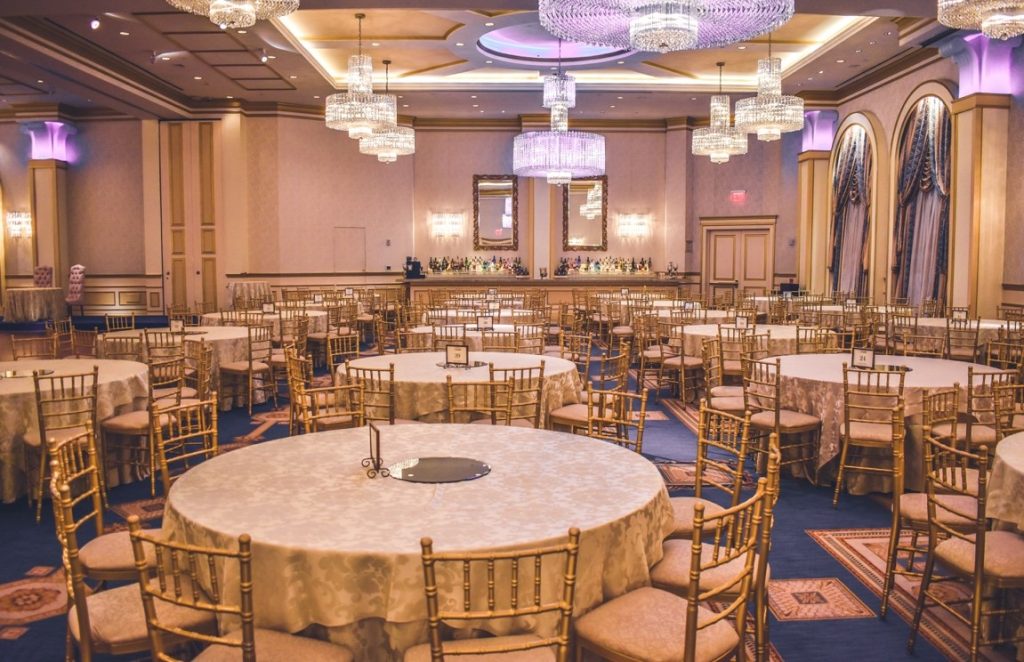
Ask for a Floor Plan from the Venue
Knowing the dimensions of the space you will work with is essential for table assignments. For one, the dimensions will give you an idea of how many tables you can feasibly put.
Venues typically give blank copies of their floor plan. This floor plan will allow you to visualize the arrangement of your tables, which is the first step in proper numbering. You can experiment with different layouts, ratios between seats and tables, and so on.
If the venue regularly holds events, ask them if they kept previous floor plans. Doing so will give you a concrete idea of how people have worked with the space. You can take what works, add personal touches, and build your plan.
If the venue is more private or personal, you can take measurements. Be as accurate as possible. Afterward, you can create a sketch of the space on paper or digital software. From there, you can start creating a table plan.
Measure Your Tables and Chairs
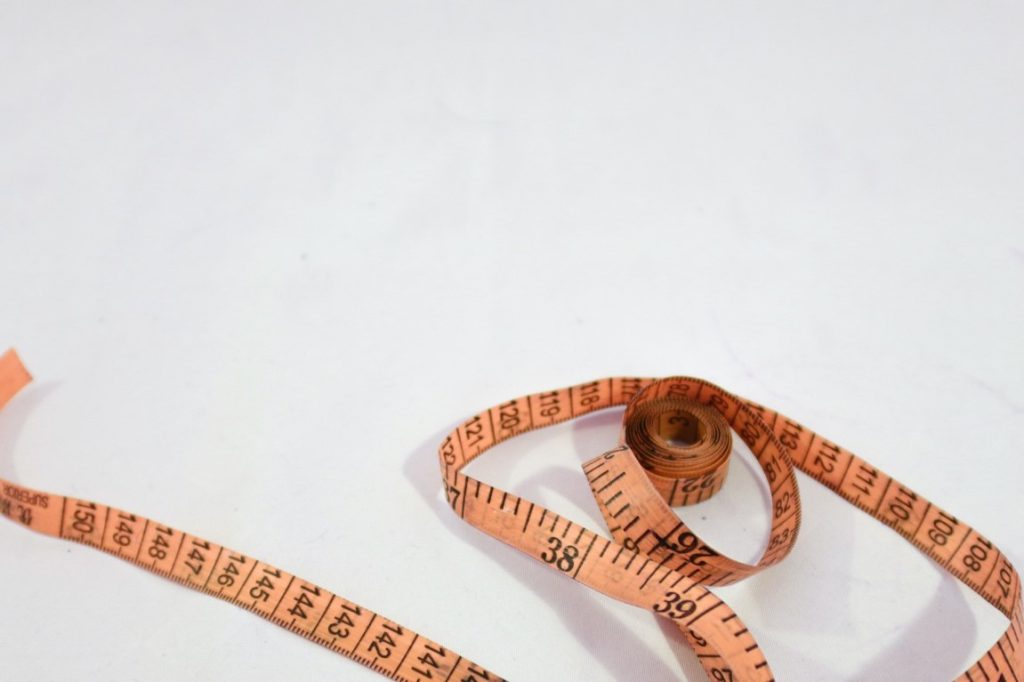
You may have opted to rent tables and chairs from the venue or a nearby company. You may have bought mismatched fixtures from different thrift stores. You may have chosen to bring what you already own.
Regardless, you need to take note of the tables’ dimensions. Their sizes will determine how many people you can seat at one table. As a result, you will know how many tables you need overall.
Finalize the Headcount as Soon as Possible
Before figuring out how to number tables at your wedding, you must know how many guests are coming. The sooner you finalize the headcount, the faster you can create a floor plan.
An RSVP is typically included in the wedding invitation suite, which guests receive around 6 months before the big day. 2 to 3 months before your ceremony, you will start receiving affirmatives or negatives.
The RSVP is a versatile tool. You can set a deadline for your guests to respond, of which you can remind them around a week before the specified date. Not only will you determine your headcount, but you can also limit your guests through polite wording.
Collaborate with Your Vendors
Wedding planning is a multifaceted task that can quickly become overwhelming. Thus, you should utilize every resource available to you; ask your vendors to help you come up with the best possible floor plan.
Coordinate with your wedding planner and the staff at the venue. Given their experience, they can provide useful insight. If you choose to hire a catering service, you must ask for the manager’s input as well.
Start Figuring out Where People Will Sit
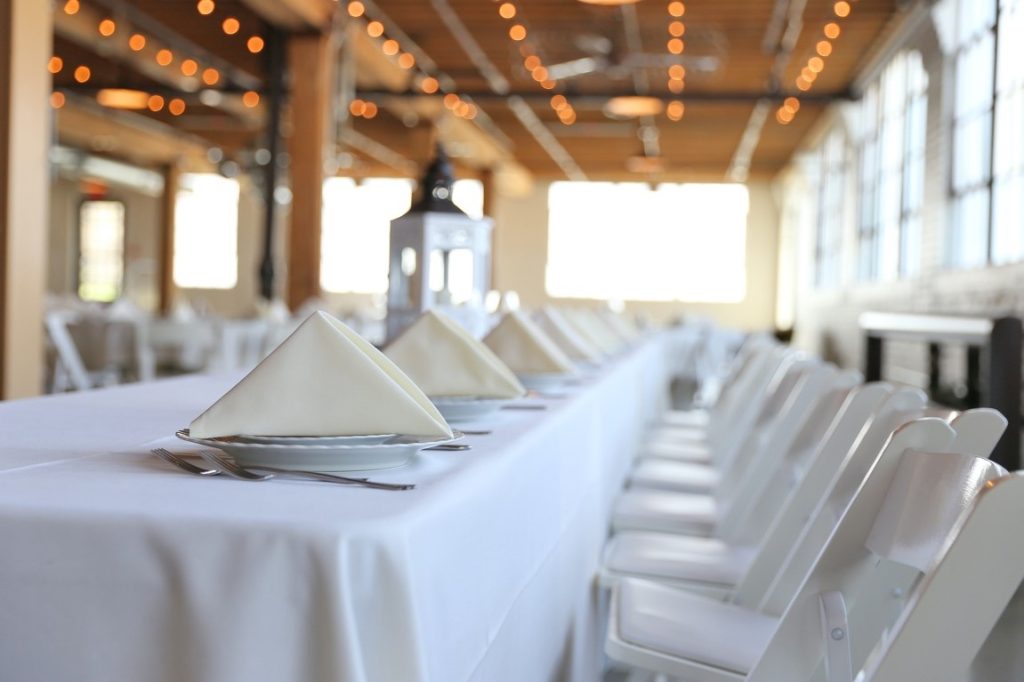
Once you have an idea of how many tables and chairs will be at your wedding, you can start assigning groups. There are two general ways you can do this: table assignment and seat assignment.
Table assignment is the easier option, as it requires less planning. You assign your guests to a specific table, but they can choose where they sit. As such, you do not need to prepare a place card for each guest.
Seat assignment requires more work; however, in some ways, this method makes some logistics more convenient. You have control over where each guest sits. This option is better for accounting for specific needs, such as meal deliveries and speeches.
In general, it is best to fill one table with people who know each other. Your colleagues from work can go to one table, and your friends from university can occupy another. Here are other tips for creating a seating arrangement:
- Stick to age groups as much as possible. If kids and teens cannot sit with their parents, set tables aside for them. Do not put unrelated seniors and millennials at one table, especially if their beliefs and lifestyles contrast.
- If you are aware of tensions between people, do not put them together. If a sibling or cousin does not get along with the rest of their family, place them somewhere else. Do not seat exes at the same table. Doing so can prevent drama and fights from breaking out.
- If all your guests are familiar with each other, consider distributing them to different tables. This tactic allows your guests to socialize with a bigger group of people. If you want to, you can even matchmake your guests.
- Avoid a “singles” table or a “leftovers” table. Be smarter and more strategic with your seating arrangement; grouping random people at one table might result in awkwardness. Likewise, do not be too forward with your matchmaking attempts.
- Ask your parents and in-laws for help. Your parents and in-laws likely invited close friends and other relatives. Get your family involved by asking them to create mini-seat plans for the people they invited.
Numbering the Tables
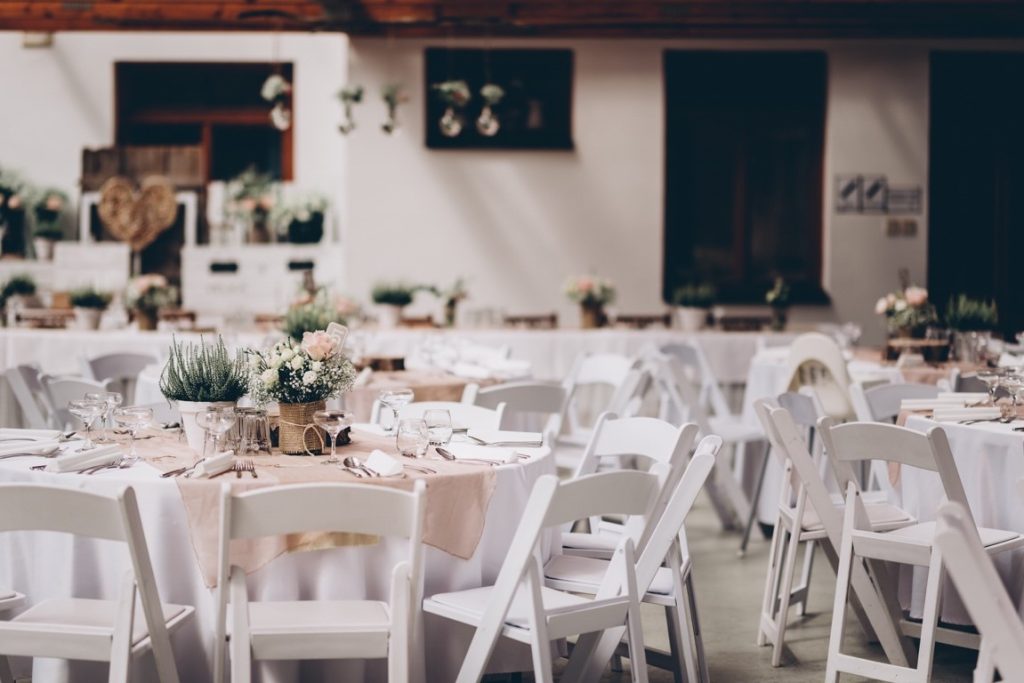
Traditionally, couples go with standard numerals when numbering the tables. This method is easy and intuitive. You can go clockwise, front to back, or left to right when deciding the order of the numerals.
However, you may want to explore other options. Utilizing another system can emphasize the theme of your wedding. Likewise, you can avoid offending guests who think that the lower the table number, the higher the importance.
Here are some alternative ways you can number your tables:
- Letters – “A,” “B,” “C”
- Gemstones – “moonstone,” “pearl,” “amethyst”
- Fruits – “apple,” “orange,” “peach”
- Colors – “red,” “indigo,” “violet”
- Countries – “Canada,” “Switzerland,” “Egypt”
- Translations of I love you – “Je t’aime,” “Te quiero,” “Jag älskar dig”
- Flowers – “roses,” “daisies,” “daffodils”
- Sports teams – “Boston Red Sox,” “New York Yankees,” “Tampa Bay Rays”
Sample Table Arrangements for Weddings
1. Numbering Tables Using Numerals
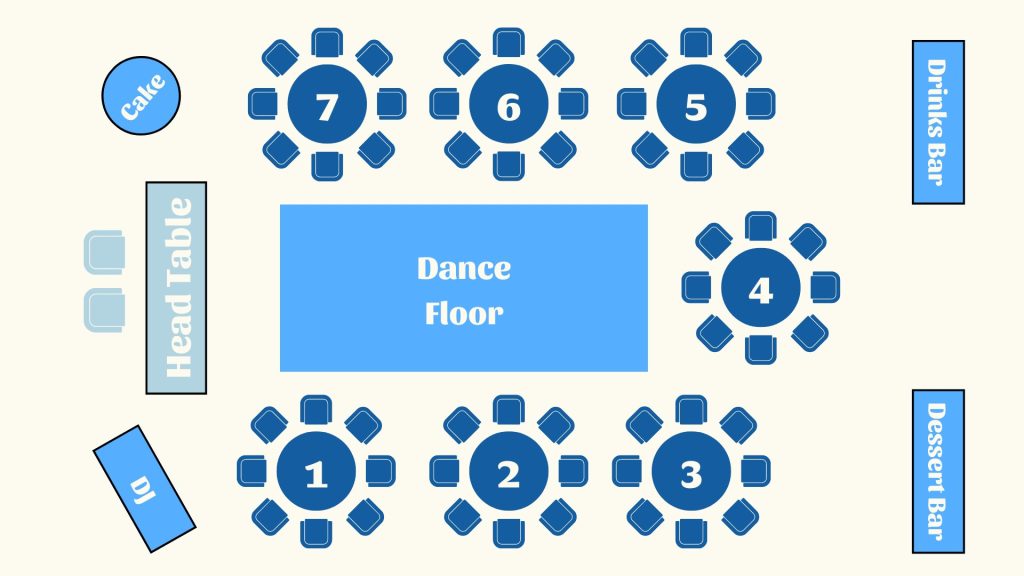
2. Numbering Tables Using Letters
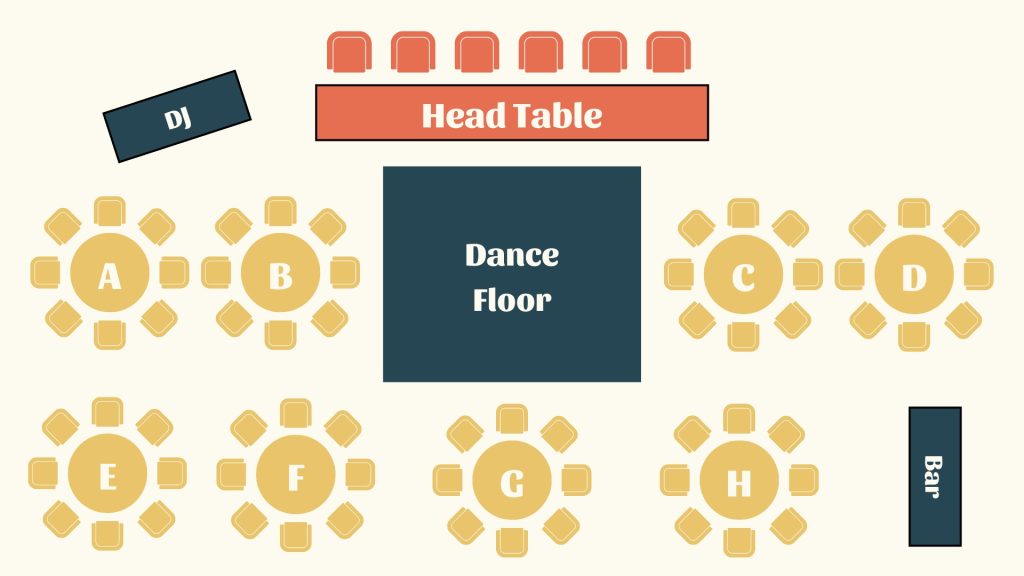
Tips for Arranging Tables at Weddings
Be Mindful of the Space Between Tables
Make sure to insert enough space between tables. Doing this will give your guests enough room to push their chairs back without disturbing others.
Moreover, having enough space is also important for servers. They need to walk to different tables, holding trays of food and drinks, without bumping into each other or against guests.
Account for Your Guests’ Specific Needs
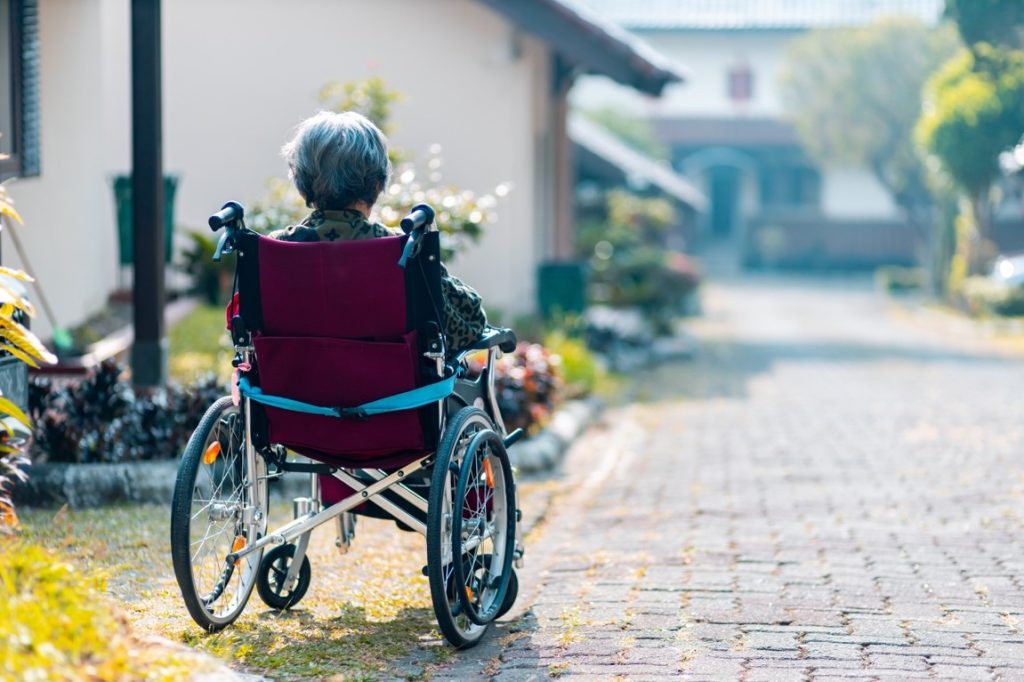
Regardless of the size of your wedding, you are bound to have a diverse group of people on your guest list. Each of them has specific needs and preferences that you need to acknowledge.
For instance, you might have guests with disabilities. Make sure their table has enough space and height to comfortably accommodate a wheelchair. Furthermore, place them with their caretaker or someone they trust.
You should also seat pregnant guests and families with small children near restrooms. Additionally, you may need to rent a few high chairs. If necessary, designate a breastfeeding area and a place where children can play.
If kids have their own tables, feel free to place them somewhere in the back. Although they can hear well, they might not be that interested in hearing speeches or watching reception traditions. They can also chat loudly and play with each other without disturbing other guests.
Oppositely, you may want to seat older guests at the front. Place them near enough to the sound system so they could hear everything, but not too near that the music will frustrate them. This position will also induce less strain on their eyesight.
You may know your guests’ needs already, or they can let you know through the RSVP or a message. However, you must remember to ask them beforehand. Doing so will give everyone a memorable night.
Have Room for More
Even though your guests have sent their RSVPs before the wedding, you never know if they will bring an unannounced plus-one or more. Prepare an extra table with several chairs. You do not have to put them out immediately but put them somewhere easily accessible.
Include the Vendors in the Floor Plan
If possible, you should also account for where the vendors will work during the reception. Set some space for caterers, especially if the meal will be served buffet-style.
Put the open bar where there is space for people to line up or hang out nearby. Ideally, you should not have to move tables and chairs for space. Avoid placing the bar near minors.
Set aside an area for the DJ or the live band. Coordinate with them closely; ask them how much space they need for their equipment. Likewise, there should be outlets available for the sound system, instruments, and so on.
Table-Related Stationery
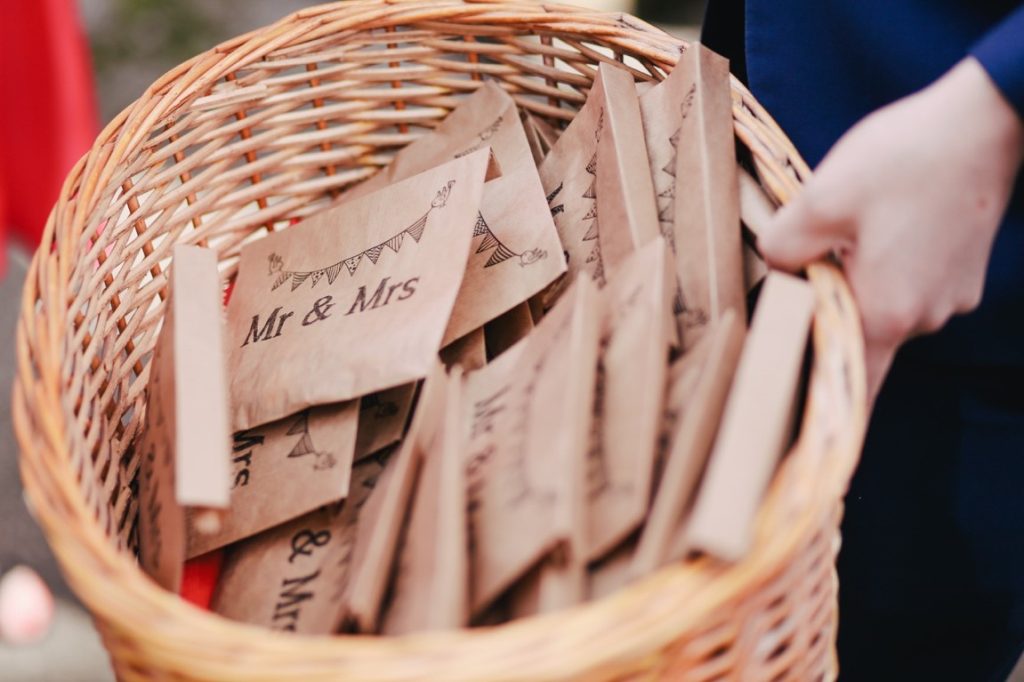
You need to prepare different cards to guide your guests to the right table. As mentioned above, there are two ways you can create a seating plan: seat assignment and table assignment. Each way necessitates a subtly different set of cards.
If you chose to go with a seat assignment, you will need the following cards:
- Seating chart or escort cards
- Table cards
- Place cards
If you chose to go with a table assignment, you will need the following cards:
- Seating chart or escort cards
- Table cards
A seating chart visualizes where your guests are supposed to sit. This chart is typically placed by the entrance of the reception.
Escort cards function like a seating chart, except they are more personalized. Each guest receives an escort card that tells them which table they have been assigned to. You can have both a seating chart and escort cards, or you can choose one.
Table cards are placed in the center of a table and are often integrated into the design. They indicate what table it is. This card is essential; without it, your guests might get confused and lost.
Place cards are more specific; they tell a guest which seat they must occupy. You can also convey other information through the design of a place card, such as what meal the guest has chosen in the RSVP.
You can include table-related stationery when you order your wedding invitations. You also have the option to DIY them, edit them digitally, or hire a professional calligrapher. Regardless, make sure that the design stays consistent with the entire suite and wedding in general.
Moreover, make the table cards noticeable from a distance. To make them stand out, use bright colors and large fonts. This way, your guest will find their tables more quicker.
Create Stations
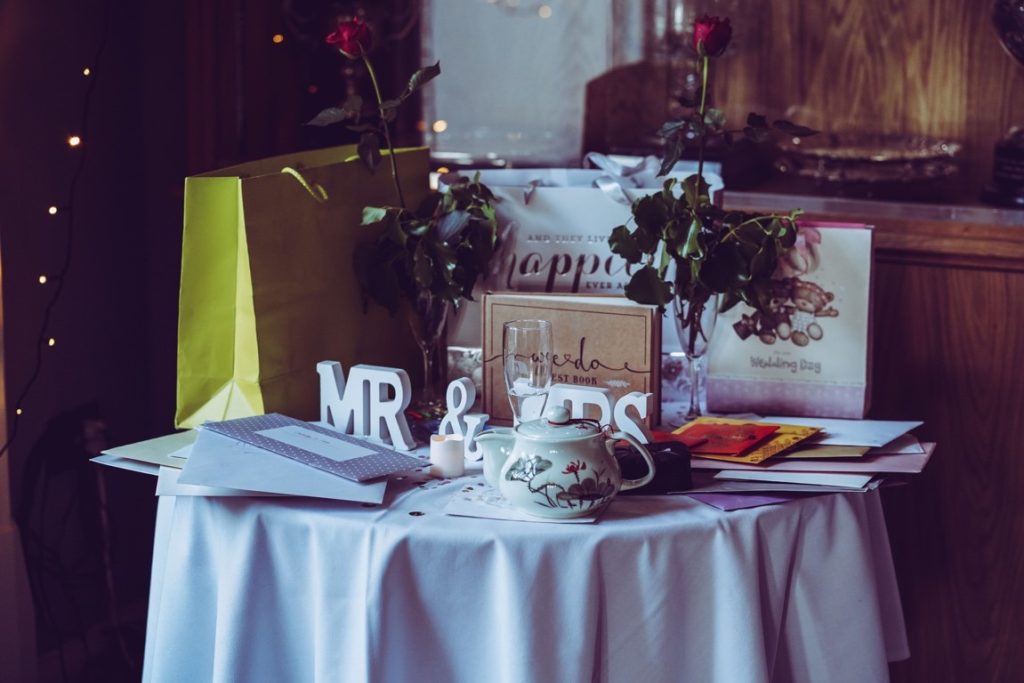
Tables are essential for multiple reasons. Besides seating guests, tables also function as stations with several purposes:
- You can put the seating chart on a table by the entrance, along with the wedding guest book.
- Designate a table where your guests will place their gifts, cards, and well-wishes.
- You will also need a table for the cake-cutting ceremony.
- Tables are sometimes necessary to facilitate certain games as well.
- You can put wedding favors on a table by the exit, so guests will not forget to get one before leaving.
Do Not Worry Too Much
Understandably, you want your wedding to be perfect. As such, you might be stressing too much about how to number tables at your wedding. Calm down, breathe, and reorient yourself.
In the grand scheme of things, how you number the tables and seat the guests do not matter a lot. They sit for at most 1.5 hours; the rest of the time is spent socializing, dancing, and moving around. If your guests do not like where they sit, they can just stand up and party.